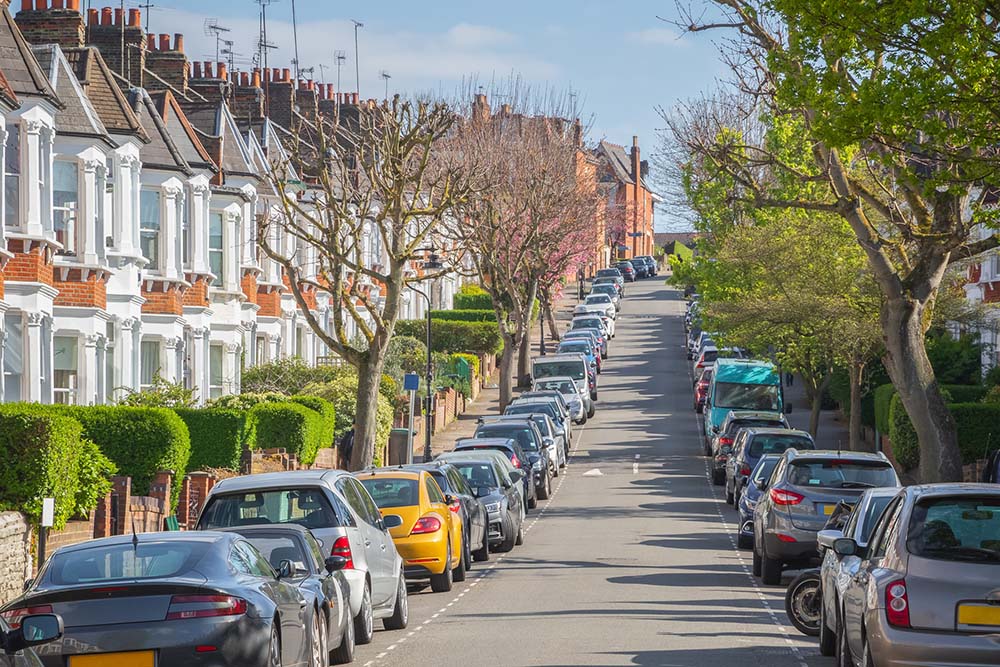Assess the Incline
Before parking on a hill, take a moment to assess the incline carefully. Steep hills pose a greater challenge for parking, and it’s essential to evaluate whether the slope is manageable. If the incline seems too steep, consider finding an alternative parking spot with a gentler slope to minimize the stress on your vehicle’s transmission and braking system.
Choose the Right Spot
Selecting the appropriate parking spot on a hill is the first step in ensuring safety. Whenever possible, opt for a flat surface or find a spot where the incline is minimal. If you must park on a hill, try to position your vehicle facing uphill. This minimizes stress on the transmission and makes it easier for the parking brake to hold the vehicle in place.
Check for Adequate Space
Ensure that there’s enough space in front and behind your vehicle when parking on a hill. Leaving sufficient space allows for adjustments if your car starts to roll. In the event that your parking brake fails or the transmission slips, having some extra room can prevent collisions with other vehicles or obstacles.
Turn Your Wheels
One of the key safety measures when parking on a hill is to turn your vehicle’s wheels in the right direction. When facing uphill, turn your wheels away from the curb and towards the road. Conversely, when facing downhill, turn your wheels towards the curb. This technique adds an extra layer of safety by preventing your vehicle from rolling into traffic or down the hill if the brakes fail.
Use the Parking Brake
The parking brake is your best friend when it comes to parking on a hill. Always engage the parking brake before shifting your vehicle into park or leaving it unattended. The parking brake helps distribute the weight of the vehicle between the transmission and the brakes, reducing the strain on the transmission and ensuring that your car stays in place.
Shift to Park (Automatic Transmission) or First Gear (Manual Transmission)
For vehicles with an automatic transmission, shifting to “Park” is essential when parking on a hill. This locks the transmission, preventing the wheels from turning and providing an additional layer of security. If you drive a manual transmission vehicle, engage the handbrake and shift into first gear when facing uphill or reverse when facing downhill.
Use Wheel Chocks
For an added layer of security, especially on steeper inclines, consider using wheel chocks. Wheel chocks are wedge-shaped blocks that can be placed against the tires to prevent your vehicle from rolling. Keep a pair of wheel chocks in your trunk, and use them as an extra precaution, especially if you’re parking on an exceptionally steep hill.
Monitor Weather Conditions
Weather conditions can play a significant role in hill parking safety. Wet or icy surfaces reduce traction, making it easier for your vehicle to slide. During adverse weather, be even more cautious when parking on hills. Take extra time to position your vehicle carefully, engage the parking brake securely, and consider using wheel chocks for additional stability.
Check for Signs and Regulations
Before parking on a hill, be aware of any signs or regulations in the area. Some hills may have specific rules or restrictions regarding parking, and failing to comply could result in fines or towing. Always check for signs indicating parking restrictions or guidelines and follow them accordingly.
Consequences of Neglecting Safety Tips
Ignoring safety tips when parking on a hill can have severe consequences, not only for your vehicle but also for the safety of others. Here are some potential repercussions of neglecting hill parking safety measures:
Rolling Incidents:
Without engaging the parking brake or turning the wheels in the correct direction, your vehicle is at risk of rolling down the hill. This can lead to collisions with other parked cars, pedestrians, or even moving traffic.
Transmission Damage:
Parking on a hill without engaging the parking brake puts excessive stress on the transmission. Over time, this can lead to transmission damage, resulting in costly repairs or even the need for a complete transmission replacement.
Traffic Hazards:
If your vehicle rolls into traffic due to inadequate hill parking safety measures, it poses a significant hazard to other drivers. Collisions can occur, potentially causing injuries or fatalities.
Legal Consequences:
Neglecting parking regulations on hills may result in legal consequences such as fines or towing. Municipalities enforce parking rules to maintain order and ensure the safety of both pedestrians and drivers.
Insurance Ramifications:
Negligence in hill parking safety may affect your insurance coverage. If an accident occurs due to inadequate parking practices, it might impact your insurance claims and premiums. Insurance companies often consider driver responsibility when assessing claims.
Parking on a hill requires careful attention to detail and adherence to safety measures. By choosing the right spot, turning your wheels correctly, using the parking brake, and following local regulations, you can significantly reduce the risk of accidents and damage to your vehicle. Neglecting these safety tips can lead to severe consequences, including rolling incidents, transmission damage, traffic hazards, and legal troubles. So, the next time you park on a hill, take a few extra moments to ensure your vehicle stays put and everyone remains safe.

Patrick M. is Editorial Director for the always expanding DriveSafe Online library of courses. With over two decades of experience developing award-winning training, he now focuses on innovating online driver safety training. Pulling from his background in journalism, he steers the wheel behind the creation of top-tier content that promotes a better journey—whether on the digital highway of learning or the real roads we travel every day.
